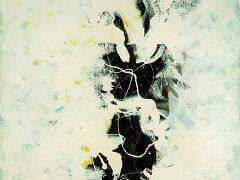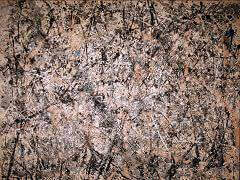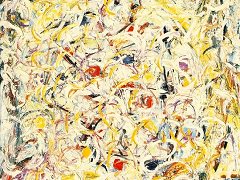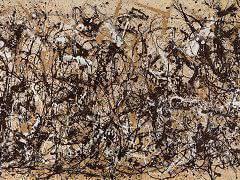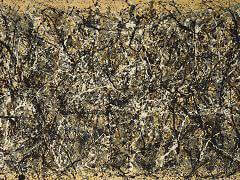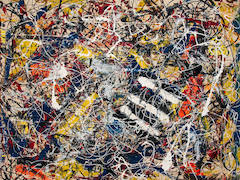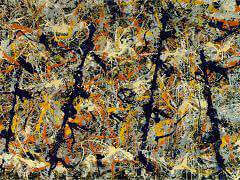Head, 1938-41 by Jackson Pollock

Avid in his emulation of Picasso, Jackson Pollock quite predictably chose as well to project himself into the Minotaur's libidinous personality. A common psychoanalytic interpretation of
this beast sees his two halves as representative of the clash between unconscious, irrational impulse and the more controlled conscious mind. Pollock's fervent desire in the early forties - which has been vividly recalled by his
wife Krasner - was not only to create a "parallel" version of Picasso, but to compete on an equal level and eventually surpass the accomplishments of the twentieth century's greatest master. An arrogation of Picasso's subjective
engagement with the Minotaur would have been congruent with this ambition and with Pollock's own psychopathology.
During the thirties, Picasso had presented his bestial alter ego in many guises, ranging from violent and brutal to noble and piteous. To all appearances, Pollock identified more closely with Picasso's renditions of the Minotaur
as victim, and sometime prior to 1941, he created a radically disquieting version of the bull/man, seemingly trapped, afraid, and in terrible pain. On this canvas, entitled Head, Pollock wound around one side of the
Minotaur's face a striped serpentine demarcation which appears to be a devouring snake.The patent terror on the bigger face (a probable self-portrait) duplicates the look of the man/bull creature. In the painting, Pollock
magnified and compacted the image, pushing the beast right up against the picture plane, in order to elicit a correspondingly claustrophobic reaction from the viewer. Once again, he increased the tension by including another
disembodied eye, now clearly floating in indeterminate space.
Pollock's first contact with the art of Pablo Picasso dated to the 1920s, when he was a student of Schwankovsky and read Creative Art, The Dial, and The Arts. (He saved a clipping on Picasso from the last.) The revival of
Pollock's interest in Picasso was the result of a confluence of events that began with the publication of Graham's article linking Picasso to both primitive art and Jungian psychology. During the following year, several issues of
Cahiers d'Art were devoted to the new work of Picasso. This, together with the much-heralded arrival in New York by 1939 of Guernica and
Les Demoiselles d'Avignon, certainly reinforced Picasso's appeal.



